There are many reasons why snowshoeing has not been added as a Winter Olympic sport. Though, there are also a lot of reasons why to include it. Competitive snowshoeing has been in existence for about 200 years, according to Mark Elmore, former Director of the United States Snowshoe Association and World Snowshoe Federation.
Criteria for Olympic Sports
One of the main criteria for consideration as an Olympic sport is history and longevity, according to the International Olympic Committee, or IOC for short. Other requirements for being considered an Olympic event include that a sport is widely practiced. Snowshoeing clearly fills these requirements, and then some.
The continued growing popularity of the sport also bodes well for snowshoeing as an Olympic sport. The Snowsports Industries of America, a non-profit trade association of the winter outdoor industry, conducted 18,000 interviews to assess participation. As a result, SIA projected 3.4 million snowshoers in the 2019/2020 winter season. This number compares to 4.8 million cross-country skiers and 25.1 million across all winter sports. Furthermore, ten countries on five continents have snowshoe organizations registered as the World Snowshoe Federation members.
Another vital statistic is the age group of snowshoers which includes 20% under 17. Also, 25-34-year-olds are the largest percentage of participants at approximately 30%. Ages 18-24 and 35-44 each consist of about 13% of participation. Finally, 8.5% are 45-54, with the remaining 15% being over age 55. Regarding gender, about 66% of participants are male and 44% female.
Read More: The Dream Team: Increasing Diversity in Snowshoeing and Snow Sports
New Events
Let’s look at the IOC’s inclusion of special events over the years like slopestyle and big air. These might make you scratch your head wondering how Olympic officials rationalized their decisions. So here are a few facts: Before a new sport can be added to the lineup, an existing sport must be dropped.
However, the number of events has continued to grow at each Olympics. The 2022 Winter Olympics in Beijing had over 100 events, the largest in history. Many new events were not even invented until roughly a decade ago. Though all have been phenomenally successful events in the Winter X Games, the annual extreme sporting event each January televised by ESPN. These are somewhat entertaining but have absolutely no history or longevity as the IOC claims they must to be considered.
So, how did the IOC circumvent its own rules? They include new events under the umbrella of currently successful disciplines like alpine and cross-country skiing. Both of these sports have long histories and meet all the IOC parameters. But the reality is that there is no way any of these imported X Games sporting events come close to achieving the widely practiced requirements.
Read More: Two Weeks in the Life of an Olympic Enthusiast
Demographics and Advertising
Another critical factor is the demographics and advertising potential. The IOC has desperately been courting the new younger generations. The X Games are the perfect example of reaching those audiences. Thus, to meet their marketing and financial plans, the IOC hi-jacked a handful of sports from the X Games and deemed them official Olympic events.
To understand how important the money factor is to the IOC, look at softball and golf in the Summer Games. Softball had basically very little advertising potential. Given that glaring fact, the IOC removed it as an official sport after the 2008 Games. After that, though, the IOC added it as a one-off appearance in the postponed 2020 games. On the other hand, golf has been missing in action as an Olympic sport since 1904. Given its over-the-top worldwide appeal and lucrative advertising reach, adding golf to the 2016 Summer Games in Rio de Janeiro was a no-brainer. Ever since Peter Ueberroth showed the IOC how to profit during the 1984 Los Angeles Summer Olympics, the IOC has been on that same quest.
To Be Or Not To Be
When you take all the IOC rules, regulations, incentives, and motivations, it’s challenging to move the needle when adding a sport like snowshoeing to the Olympic lineup. Though it has the history, longevity, youthful appeal, and growing numbers, the advertising base – or lack thereof – is the one determining factor that has kept this sport from racing to the finish line in the Winter Olympics. What’s really ironic is that snowshoe racing has been a Special Olympics event since 1997 but has yet to gain the nod from the IOC.
Longtime supporters of adding snowshoe racing to the Winter Olympics feel like they are pushing a snowball up a hill. But as many people claim, this race is far from over.
Do you think snowshoeing should be an Olympic sport? Why or why not? Please share your thoughts with us in the comments below.
This article was first published on March 18, 2014, and was most recently updated on March 8, 2022, with new statistics.
Read Next: Snowshoeing in the New York Empire State Winter Games

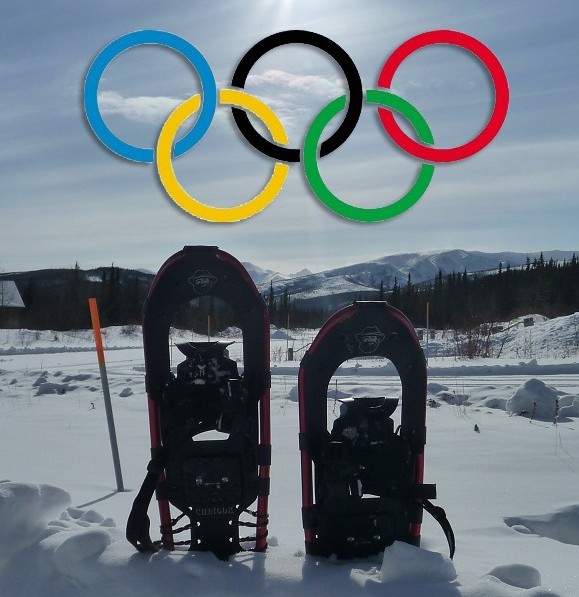
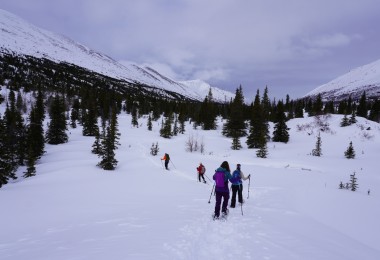
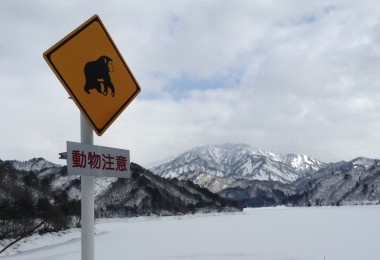
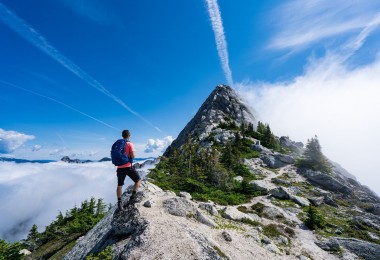
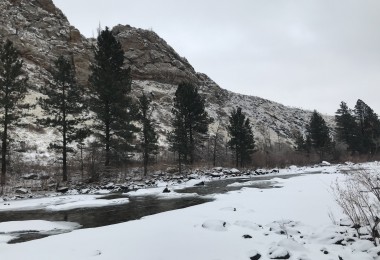

A huge YES! Snowshoeing is a great competitive sport and has as much historical significance as many other Oly athletics! Matt makes a good point of having Nordic Sprint snowshoe comps! Sadly, this is not as popular as the 5K, 10K and longer races. It would be even more competitive to create a pentathlon Nordic combination which can be a one-day or two-day event.
Thank you for sharing your thoughts, Stephen! It’s challenging to navigate all the logistics of adding snowshoeing as a sport. However, with the continued growth in popularity, we hope we’re getting closer to snowshoeing being part of the Olympics! -Susan, Snowshoe Mag Editor
Snowshoeing definitely belongs in the Olympics, besides snowshoe running a “snowshoe cross” off trail event would be great, thrills and spills make good TV.
Agreed, WarrenB! It would be great to see snowshoe racing as an event, especially considering track and field has been a centerpiece of the Summer Olympics for over a hundred years. We can only hope we’ll see snowshoe racers out there at some point. Thanks for sharing your thoughts! – Susan, Snowshoe Mag Editor
My father and I met with the Olympic Committee in either 1989 or 1990 to try and get snowshoeing in as a show sport in Albertville, France. The Snowshoe Club that Roland D. Tanguay (my father) was the President of, I believe, was the first in the USA formed in 1924. He was the first person to present this to the Old.
Wow!! That is so neat that your father was the President of the first Snowshoe Club and you both met with the Olympic Committee! Adding snowshoeing as an Olympic sport is one of the publication’s goals as well. Thank you for advocating for the sport and for sharing your story. 🙂
Hey Snowshoe Enthusiasts!
Let’s promote Nordic Sprint snowshoe comps; 100m, 200m & 400m competed on a 300m snow/ice track. Unfortunately, this event has been long ignored in favor of the 5K & 10K races. Here, in the USA there’s only one comp per season and it’s in upper state NY. Let’s work together to promote all aspects of snowshoeing and revitalize the sport!
Hi Rick……we have had many a discussion here in Collingwood, Ontario regarding the inclusion of snowshoeing as an Olympic sport…..we have hosted The Switchback Challenge, a 5K-10K event at Craigleith Ski Club for the past nine years, and look forward to our tenth anniversary in 2015…….the process for creating a formal provincial snowshoe association is quite involved, not to mention what it would take to form a national body…..would appreciate your thoughts on this, but think your article is right on the money……all the best…..Hugh
Rick you’re literally & figuratively “right on the money” when you reason lack of potential advertising dollars inhibiting Olympic snowshoeing. While the snowboarding events of this past Olympics were great to watch, it was patently clear they were added to attract the targeted, bountifully-economic based younger audiences. My sense is that same audience would find snowshoeing events boring and tune out. That’s something advertisers fear. If the ever-growing number of snowshoe enthusiasts is persistently vocal, perhaps those same advertisers will realize “there’s Olympic gold in them that snowshoe dollars”.
Excellent article we will find you the 2 other missing coutries. This sport is excellent for cardio. Extreme snowshoeing up in the Laurentians in Morin Heights Québec, Canada is absolutely a killer. You can have a walking competition, a short run, a long run an obstacle race, up hill run in the forest…name it! Its an ideal sport. Not too expensive for the entire family. I rediscover this sport this winter because of my sister who giv eme a pair of snowshoes and I’m telling you, Im back in shape! You don’t go downhill skiing when its -30 but you can go snowshoeing and crosscountry skiing. No excuse not to go out and enjoy the winter season.
Hey Rick!
You’re absolutely right on! Snowshoeing is a great competitive sport and has historical significance. I love snowshoeing and I spread the word as much as possible. It’s great for recreational purposes and a magnificent athletic endeavor. It allows folks to see part of nature otherwise would never have been explored. Keep up the great work in spreading the word and educating the need for the sport to be in the Olympics!
Thank You,
Matt